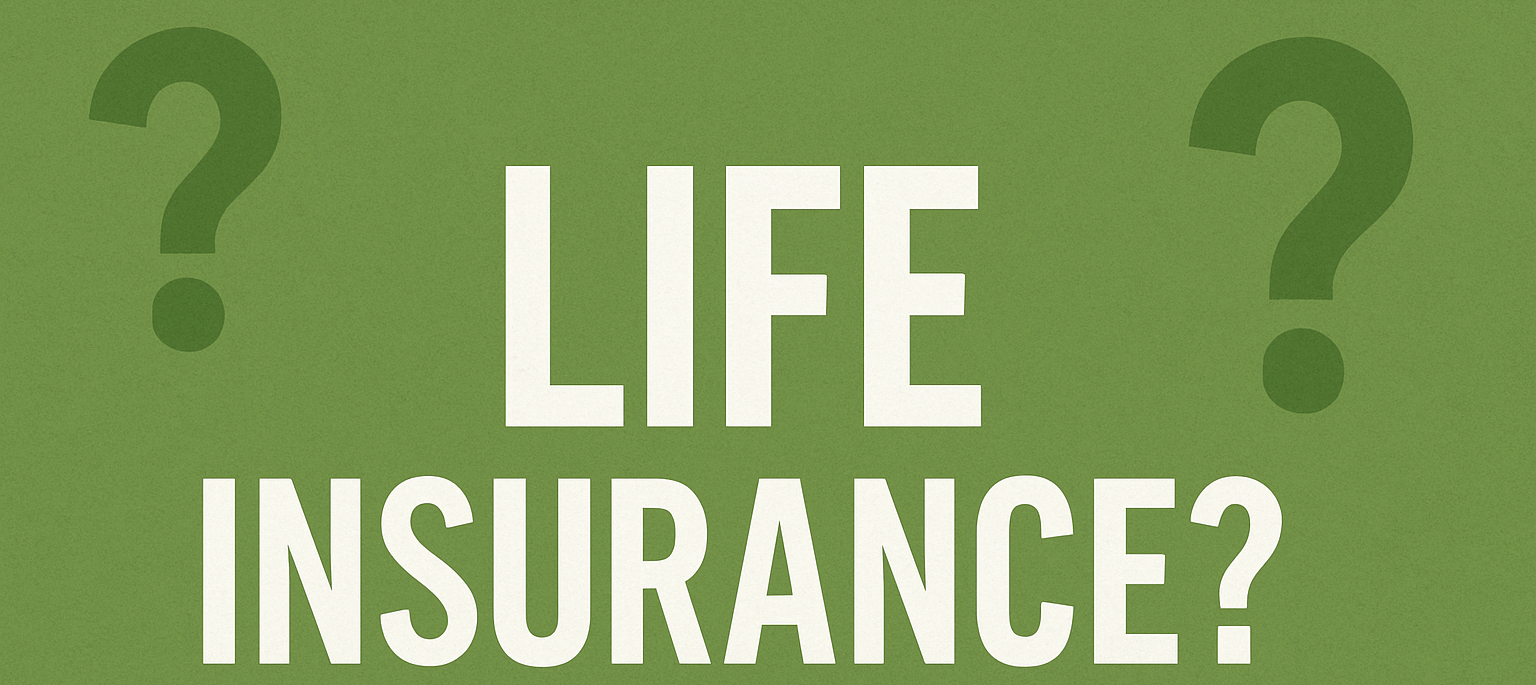What is Life Insurance
A straightforward guide to understanding the types of life insurance, how they work, and how to choose the right coverage for your needs.
Life insurance is one of the most important tools available for financial planning, yet it’s often misunderstood. While it can feel complex, at its core, life insurance is simply a way to provide security and peace of mind for your loved ones. When you pass away, a life insurance policy can help your family manage final expenses, ongoing bills, or long-term goals without being financially overwhelmed.
In this post, we’ll explain the different types of life insurance, how they work, and how to determine which one fits your needs.

Understanding the Basics of Life Insurance
How It Works
Life insurance is a legal agreement between an individual and an insurance company. The policyholder agrees to pay regular premiums, and in exchange, the company commits to paying a death benefit to the person or people the policyholder chooses. This payment is made after the insured person passes away, providing a financial safety net during a time of loss.
Why It Matters
This coverage ensures that loved ones can handle expenses like funerals, remaining debts, mortgage payments, or day-to-day costs. Depending on the type of policy chosen, it may also offer lifelong protection or savings opportunities.
Term Life Insurance
What It Is
Term life insurance provides coverage for a fixed period of time, commonly ten, twenty, or thirty years. If the insured person passes away during that period, the full death benefit is paid to the beneficiary. If the policy expires before that happens, no benefit is paid unless the policy is renewed or converted.
Who It's For
This type of coverage is well-suited for individuals who need protection during specific life phases. Parents raising young children, homeowners paying off a mortgage, or people with large financial obligations often turn to term life insurance for its simplicity and affordability.
Key Considerations
The premiums for term life are typically lower than for permanent policies, especially if purchased while you're younger and in good health. However, once the term ends, the policy offers no further protection unless renewed, usually at a higher cost due to age.
Whole Life Insurance
What It Is
Whole life insurance is a form of permanent life insurance that remains in effect for the insured’s entire lifetime, as long as premiums continue to be paid. In addition to the death benefit, whole life policies also build a cash value over time, which can be accessed or borrowed against.
Who It's For
This option appeals to individuals seeking long-term protection and financial stability. It is often chosen by people who want to lock in fixed premiums and ensure they leave something behind for family, pay estate taxes, or support a charitable cause.
Key Considerations
Although whole life premiums are higher than term life premiums, they do not increase with age. The policy builds cash value slowly, and that value can be used in later years if needed, although borrowing from it will reduce the eventual death benefit.
Universal Life Insurance
What It Is
Universal life insurance is another type of permanent coverage that allows more flexibility than whole life. Policyholders can adjust the amount of their premiums and death benefit throughout the life of the policy. It also accumulates cash value that earns interest over time.
Who It's For
This option is attractive to individuals who expect their financial situation to change or who want more control over their coverage. Entrepreneurs, people planning early retirement, or those with fluctuating incomes often consider universal life for its adaptability.
Key Considerations
While it provides the benefits of lifelong protection and cash value growth, universal life insurance requires more active management. If the cash value falls too low and premiums aren’t adjusted, the policy could lapse.
Final Expense Insurance
What It Is
Final expense insurance, sometimes called burial or funeral insurance, is designed specifically to cover end-of-life costs. It is a simplified form of whole life insurance with a smaller death benefit, typically ranging from a few thousand to fifty thousand dollars.
Who It's For
This policy type is commonly chosen by older adults who want to spare their families the cost of a funeral, medical bills, or small debts. It’s an excellent choice for those who don’t have large financial needs but still want to provide practical support.
Key Considerations
These policies are generally easier to qualify for, often requiring no medical exam. Premiums remain level for life, and the benefit is guaranteed as long as the policy is kept in force. However, the smaller coverage amount may not be enough for individuals with broader financial goals.
How to Choose the Right Policy
Evaluate Your Current Situation
Start by considering your age, health, income, and overall responsibilities. A younger parent with dependents may need a different policy than a retiree looking to cover funeral expenses. Think about who depends on you financially and how long they might need support.
Estimate Your Coverage Needs
Add up potential expenses your loved ones may face, including funeral costs, mortgage balances, daily living expenses, educational support, or any remaining debts. This total can help you determine the appropriate amount of coverage.
Understand Policy Features
Term life is generally best for short-term, high-impact needs. Whole life offers long-term security and steady growth. Universal life allows for flexibility and change. Final expense insurance provides a simple way to manage final costs. Understanding the features and limitations of each can help guide your decision.
Applying for Life Insurance
Once you’ve chosen a type and determined the amount of coverage you need, the next step is applying. This often involves filling out a basic questionnaire about your health and lifestyle. Some policies may require a brief medical exam, but others do not. After approval, you’ll begin paying premiums, and your coverage will begin.
Naming a beneficiary is an important part of this process. This could be a spouse, child, close family member, or even an organization. Your beneficiary will be the person who receives the payout when the policy is used.
Frequently Asked Questions
Many people wonder whether they need life insurance if they’re single or if their children are already grown. The truth is that even if you don't have dependents, life insurance can help with final expenses, settle debts, or provide a financial gift. Others ask whether policies can be changed later. Some can, especially universal life policies, while others are more fixed in structure. Some individuals also carry more than one policy to serve different purposes. For example, a person might have a term policy for income replacement and a small whole life policy for burial expenses.
Final Thoughts
Life insurance is not just about planning for the unknown, it’s about taking steps today to care for the people you love tomorrow. It provides stability during uncertain times and helps ensure your family won’t face financial stress while grieving your loss. Whether you're just getting started or reviewing your options later in life, understanding the difference between term, whole, universal, and final expense insurance can help you make informed choices that align with your values and goals.
If you’re unsure where to begin, speaking with a licensed professional or trusted advisor can help clarify your needs and guide you toward a policy that fits both your budget and your peace of mind.



